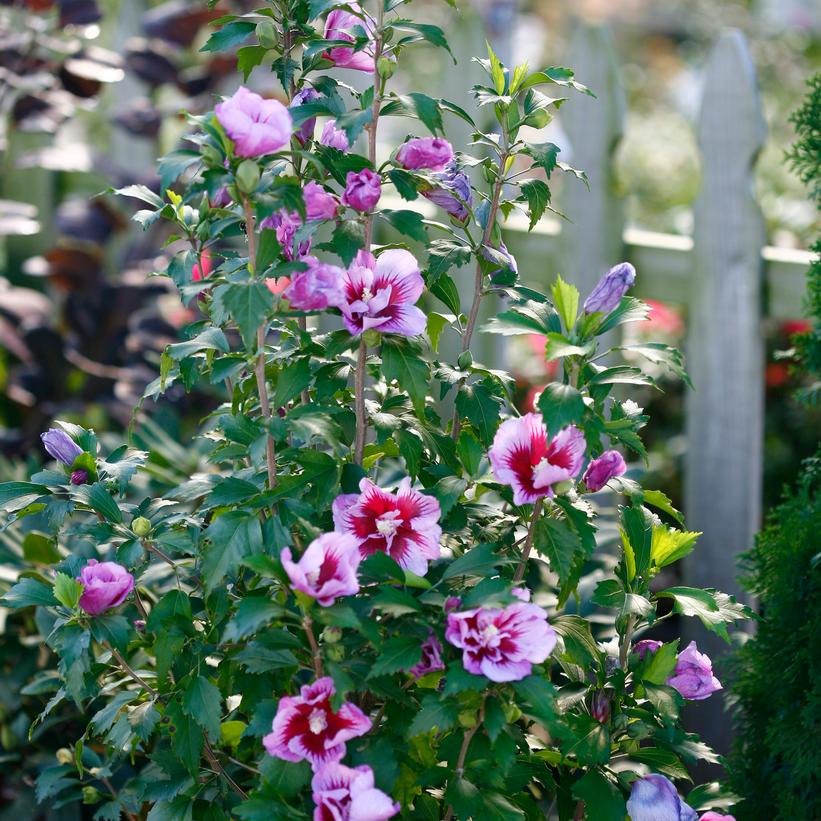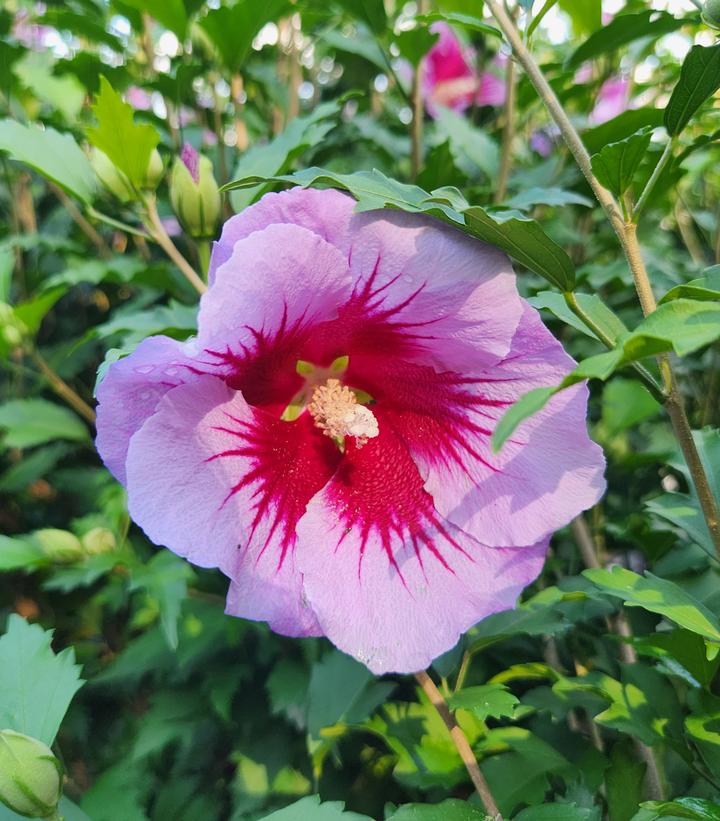



Hibiscus syriacus Purple Pillar®
Purple Pillar® Rose of Sharon
- Super narrow
- Upright habit
- Semi-double purple flowers
- Continuous bloom
- Long blooming
- Heat tolerant
- Drought tolerant

- Category: Shrub
- Alternate Cultivar: 'Gandini Santiago'
- Patent: PP25,568
- Breeder: Proven Winners
- Hardiness Zone: 5-9
- Height: 10-16 ft
- Spread: 2-3 ft
- Spacing: 2-3 ft
- Bloom Color: Purple Shades
Purchase options for Purple Pillar® Rose of Sharon
- Size: 3 Gallon 42-48"
- Status: BeautiFULL
- Availability: Online
$71.00
Success Starts With Soil
Fafard Premium Natural & Organic Compost
$12.99
Add To CartYou've never seen a rose of Sharon like this before! Think Supermodel.
You know what I mean. Tall, thin and beautiful. An unattainable goal for most of us, but we can get a taste of supermodel star power in our gardens. Purple Pillar™ rose of Sharon is a new Hibiscus syriacus with a uniquely fastigiate habit. Think of it like a Fine Line® Rhamnus with pretty purple flowers.
Purple Pillar is a totally unique rose of Sharon: it naturally grows as a narrow column instead of a wide, spreading plant. It gets to be just 2-3' (.6-.9 m) wide and 10-16' tall! Think of what you could do with that: screens, hedges, patio containers. Anywhere you need a little privacy and/or color in a narrow space, this plant is a great choice. Like most all hibiscus, it will do best in full sun. It is hardy to USDA Zone 5.
In summer, each stem is packed along its entire length with purple blooms. This unusual columnar habit makes it a real space saver - if you thought you didn't have enough space to grow rose of Sharon, Purple Pillar is perfect for you. Try it in containers, or flanking your front door, or simply as a quirky accent in your landscape.
Foliage Color
| • | Green |
Attracts Wildlife
| • | Supports Bees |
Critter Resistance
| • | Deer Resistant |
Flower Color
| • | Purple |
Programs
| • | Proven Winners |
Exposure
| • | Full Sun |
Soil Moisture
| • | Moist, Well-Drained |
Growing Tips for Hibiscus syriacus 'Purple Pillar®'
The narrow habit of Purple Pillar rose of Sharon means it creates few to no branches, so little to no pruning is required. If you want to prune it, do so in early spring. In areas that experience snow fall, avoid planting it where it might be dumped on by snow falling off of the roof - yours, or your neighbors.




